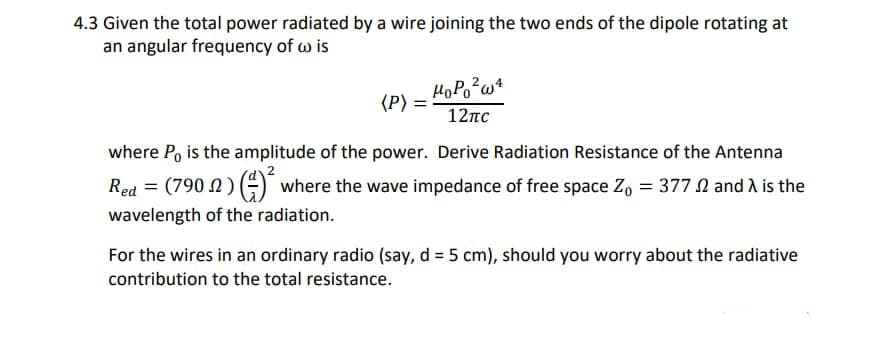4.3 Given the total power radiated by a wire joining the two ends of the dipole rotating at an angular frequency of w is HoPo?w+ (P) 12пс where Po is the amplitude of the power. Derive Radiation Resistance of the Antenna Red = (790 N) ) where the wave impedance of free space Z, = 377 N and A is the wavelength of the radiation. For the wires in an ordinary radio (say, d = 5 cm), should you worry about the radiative contribution to the total resistance.
4.3 Given the total power radiated by a wire joining the two ends of the dipole rotating at an angular frequency of w is HoPo?w+ (P) 12пс where Po is the amplitude of the power. Derive Radiation Resistance of the Antenna Red = (790 N) ) where the wave impedance of free space Z, = 377 N and A is the wavelength of the radiation. For the wires in an ordinary radio (say, d = 5 cm), should you worry about the radiative contribution to the total resistance.
Related questions
Question

Transcribed Image Text:4.3 Given the total power radiated by a wire joining the two ends of the dipole rotating at
an angular frequency of w is
HoPo?w+
(P)
12пс
where Po is the amplitude of the power. Derive Radiation Resistance of the Antenna
Red = (790 N) ) where the wave impedance of free space Z, = 377 N and A is the
wavelength of the radiation.
For the wires in an ordinary radio (say, d = 5 cm), should you worry about the radiative
contribution to the total resistance.
Expert Solution
This question has been solved!
Explore an expertly crafted, step-by-step solution for a thorough understanding of key concepts.
Step by step
Solved in 4 steps with 3 images
